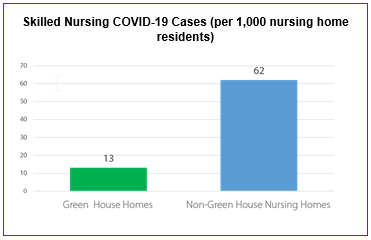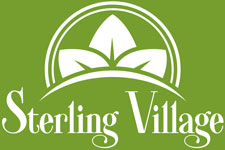 The Green House Model: COVID-19 OutcomesThe COVID-19 pandemic has, among other things, prompted significant discussion around best-in-class models of care within the skilled nursing, assisted living, memory care and independent living environments. Are there certain design elements that are going to prevent or accelerate the spread of viral contaminants? Have particular staffing patterns and workforce philosophies been shown to be more advantageous during the pandemic? How does culture intersect with the ability to effectively manage through a pandemic of this nature? There have been a number of articles on various topics such as outcomes in not-for-profit versus for-profit nursing homes, a comparison of COVID-19 statistics against Five-Star Quality Ratings, and nursing home density among other items. In this issue of Z-News, we wanted to feature a popular nursing home model that originated nearly 20 years ago, The Green House model, and discuss its standing in the midst of COVID-19 and beyond. COVID-19 & GREEN HOUSE HOMES The Green House Project partnered with University of North Carolina researcher Sheryl Zimmerman, PhD, to conduct official data collection on the novel coronavirus after learning of positive anecdotal reports within nursing homes. The study tracks the number of COVID-19 cases and deaths among both staff and elders in Green House homes and compares those statistics with national nursing home data. Ninety-five percent of Green House homes reported zero cases COVID-19 among residents or staff, according to a study of coronavirus data gathered from February 1, 2020 through May 31, 2020. This information reflects nearly 300 Green House Homes and over 3,200 seniors residing in those homes. The data below provides additional perspective on these findings. Not only were cases among residents lower, but among staff as well. A similar pattern was found with deaths among residents living in Green House homes, with a lower mortality rate compared to nursing homes as a whole. The organization will continue to collect data from Green House homes each month until at least December 2020. To read the details of the study, click here to access the report. It is important to affirm that yes, the Green House model is designed for single-occupancy rooms. It has been generally understood that this design element inherently helps mitigate the spread of the virus. What is misunderstood, however, is that not all private Green House homes represent private pay residents. In fact, the original Green House Home in Tupelo, MS, sponsored by Methodist Senior Services, has a payor mix of roughly 65% Medicaid residents. Nationally, roughly 4 out of 10 Green House residents are covered by Medicaid. Ziegler continues to support the good work of The Green House Project through board representation (Dan Hermann and Lisa McCracken serve as current board members), as well as promotion of their ongoing research, education and outreach efforts. We encourage readers to explore The Green House Project website to learn more about resources and educational opportunities available to providers, many of which are free to interested parties. Lisa McCracken Director, Senior Living Research Ziegler
0 Comments
Leave a Reply. |

 RSS Feed
RSS Feed
